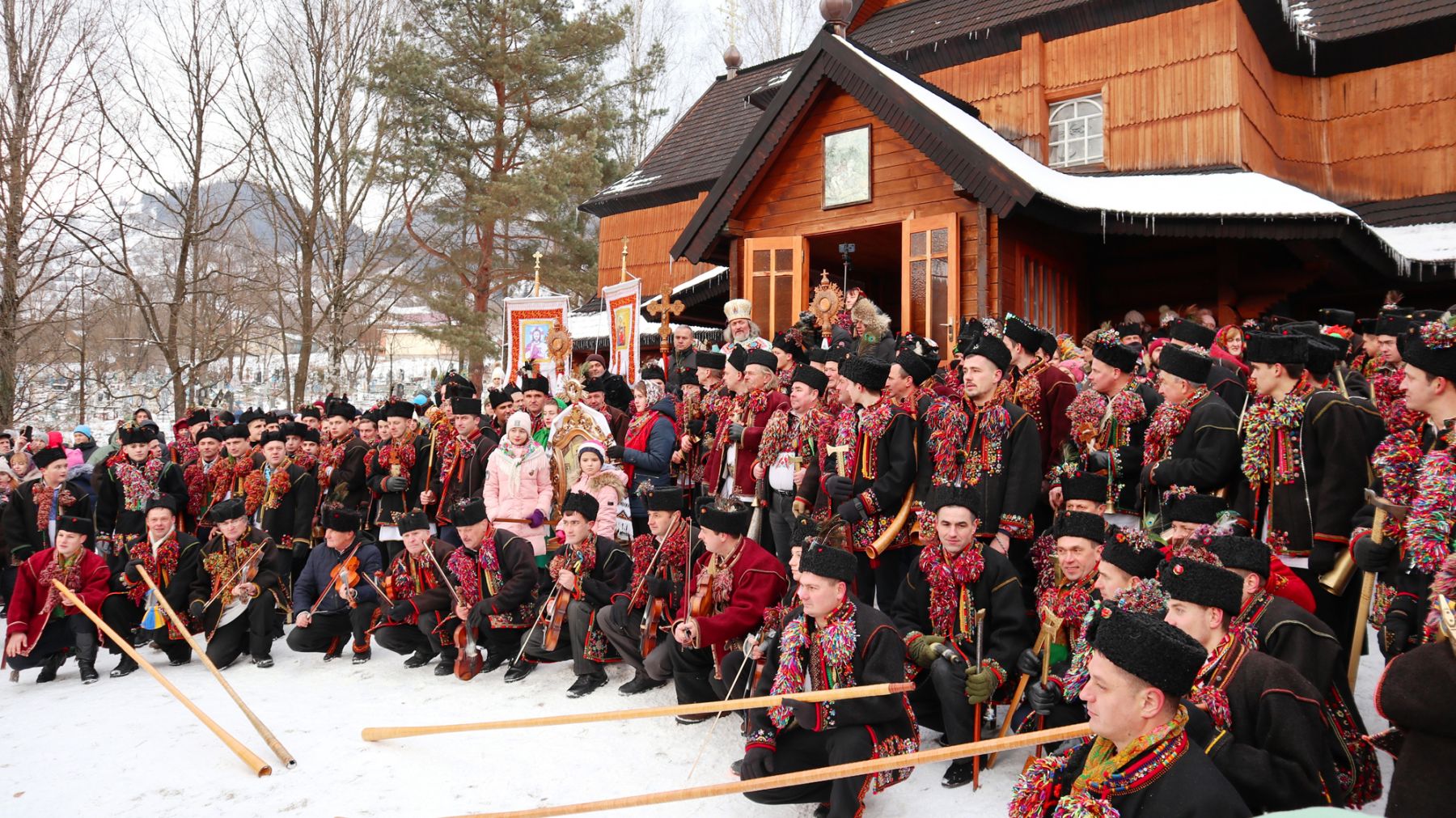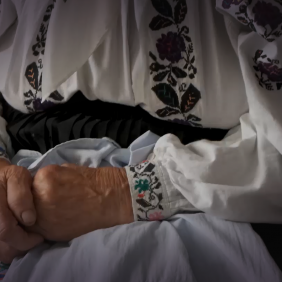Link copied

December 06, 2021

What is calendrical ceremonialism?
Calendar rituals are a system of holidays and working days that follow a religious or other calendar; they carry an important social function in the rural community as forms of self-organization and self-preservation. The more that traditional holidays and rituals appear e in the calendar, the more a group, a community or group of communities, a village, a town, or a city that follow such a calendar, is organized and the less it is affected by negative external influences and ruin. A folk calendar in traditional society is associated with the notion of order. After all, a folk calendar is the optimal order of life in a community, as proven by multiple generations. It defines the order and timing when different tasks are performed, including the following: farming land and animals, bee keeping, weaving, alternation of work and rest, different diets such as vegetarian and meat-based, singing and eating, optimal times for reproductive activities, for marriages, periods of commemoration of the dead, and folklore worship, among others.
The calendar of common events was developed over the centuries; its prolonged and sustained existence instituted its validity. As a system of rituals and customs, it became the first legislative framework that regulated and governed the way people lived, behaved, and worked. This system of common dates was strictly adhered to by the members of the community, and any departure from them by any of their own group was regarded as a threat to the existence of each individual and the community as a whole. The breaking of Christmas prohibitions on work was not just a sin, it meant a serious threat to the whole community. For example, someone working on the day of Annunciation could bring drought upon the whole village; an early singing of spring songs could cause snow and cold, hail, and stunted growth of plants. Only for magical purposes, in order to deceive evil forces, prohibitions could be deliberately and purposefully violated. For example, when women simultaneously performed different calendar songs (carols, vesnyanky, bathing and harvesting songs), this could magically compress the time. On certain days, it was important to perform ceremonial and ritual actions at least nominally (for example, the first feast of harvest, the first feast after Easter).

Traditionally, the successive change of holidays and procession of everyday life was the main criterion of time for villagers. They would remember specific occasions in relation to how it corresponded with a relevant holiday: "It was before St. George's Day, after Christmas ...", instead of the exact dates of the calendar, for example, on 5th of May or 8th of January.
How various concepts of magic work and intertwine
In the calendrical cycle of celebrations, various beliefs are combined organically: a belief in the power of the elements (fire, water, and earth), in the cult of forefathers, in the cult of fertility (greens, grains, and seeds), in Magi — one's belief in the power of their actions t on the world around them, the notion of good and evil spirits, and, in particular, a belief in the activation of evil powers during the holidays.
The cult of forefathers is based on the strong belief that buried, deceased parents, (are not considered to be in heaven), are watching over their living relatives. By honoring the dead (leaving them food at a Christmas table and at a churchyard after Easter), the villagers hoped to attract a good harvest in the fields, increase animals’ headcount, a good fortune, and happiness. Rituals associated with the cult of the forefathers were not only aimed at honoring the memory of the dead, but also at interrelation with them according to the principle "do ut des" (Latin: "give and you will be given"), in the hope that this would protect them from their possible fury.

Sacrifices were an important part of calendrical holidays. Villagers believed that without sacrifice, certain elements (water, earth, fire) would not fulfill their necessary function for the people, and instead would bring drought, fires, or poor harvest. Above all, sacrifices were made to the earth and the water: after the end of Kupala, for example, the branches of the ritual trees, morena or kupalitsa, were either drowned, burnt in fire, or torn into pieces which were then scattered around the village.
People’s belief in the capacity of their own supernatural power to influence material objects and natural phenomena, was called magic. Magic was an important component in the calendar of holidays and rituals. Experts distinguish the following purposes of magic: love magic, household magic, protective magic, healing magic, and malevolent magic. All these types of magic are reflected in the calendar of holidays and rituals. Magic is further divided by how it is enacted: contact magic and magic of likeness. In contact magic, the effect is achieved through touching an object/thing that is allegedly endowed with certain power. For example, when planting cabbage plants, the lady of the house would hold her head with her hands so that the cabbage would grow big and well-formed like her head. In magic of likeness, the effect is achieved through the recreation of movements or the external appearance of the object or creature which allegedly possesses a certain power. For example, many people practice a dance with high jumps to make the stalks of the flax plant grow tall.
The main points of the astronomical calendar cycle — around which the farming calendar is centered, including the Ukrainian one — are the solstice (winter and summer) and the equinox (spring and autumn). The calendar is determined by the sun.In olden days, people believed that the position of the sun in the sky was dependent on their aid. Over time, people gained knowledge of the independence of natural processes. .

What distinguishes holidays from typical working days?
Calendar rituals consist of the alternation between holidays and working days. The origin of the word holiday is linked in Ukrainian and some West-Slavic languages (e.g., Polish, Czech, Slovak) with such concepts as holiness or sacredness; the same meaning is given to the Latin word ‘festum’. Yet the Russian word prazdnik literally means an empty day, or a day free of any work. For some time, the Soviet ethnology known as "the labour theory of the origin of holidays" has been dominant. Under this paradigm, people in games, rites, and songs recreated the performance of daily work. This is especially noticeable in spring songs: "we sowed the millet...", "I will sow the gherkins…", "Nightingale, little bird, have you been to our garden, seen how poppies are being sown?" and so on.

This theory is false because holidays and working days in popular culture were entirely opposite in their gist and their moral principles. There are numerous differences between holidays and working days:
- The taboo on work during holidays vs. mandatory work on working days. On certain holidays, forms of work were forbidden, most often female work with thread such as weaving yarn, knitting, spinning, weaving, sewing, and embroidering. There were also specific bans: not to wash for two days after Epiphany (January, the 19th), since evil forces may enter the Holy Water of the rivers; not to use a knife for cutting during Holovosiku (September, the 11th), because one will draw blood, among others.
- One’s Sunday best (best clothes) should be worn on holidays. On Easter one wore brand new clothes, or at least a new component of the outfit. In contrast, on working days one wore. casual attire.
- People exhibited a vivid and cheerful emotional disposition, sometimes to the point of excess, on holidays vs. calmness and reflectiveness during working days.
- People exhibited ritual overeating, practically gluttony, and excessive drinking during holidays, a moderate diet, sometimes poor in calories and without meat, especially during the fast. Holidays were an emotional event; people abstained from certain foods and activities before holidays so that the difference would be even more pronounced afterwards. This was especially noticeable in the total denial of food on the eve of Christmas and Easter holidays.
- Ritual games a taboo on ritual games.
- Reverse morality (antipovedinka) during holidays is a healthy, conventionally "normal" morality during working days. Holidays simplified relations between different age and gender groups, especially communication between the young and the old. The latter have to be respected during working days. During holidays there was a strong departure from what would be considered a respectable way of life: there was endless emotional freedom — this is in contrast to the pressure from the church to act ‘respectfully’ during the holidays. A form of eroticism that was primitive, and not explicit, was cultivated. In sum, this represents reverse behavior — a swap of the accepted norms of behavior with unacceptable ones. The nature of the swap is not predetermined; therefore, it can be exemplified in the swap of the right with left, top with bottom, front with back, face with rear, male with female, etc. 3. The swap always follows rules in relation to time and place, as well as method of expression. In the Ukrainian folk calendar, the highest number of frivolities falls during the winter period: St. Andrew’s Day (December the 13th), Christmas (December the 7th ), and Malanka (September the 13th ). On St. Andrew's Day, boys could play various pranks: remove gate doors, gates, fences, carts, boats, sleighs, beehives, cartwheels, ploughs, harrows, spinners, wooden remnants; make traps on the roads with thread, with guts of a ram, with sticks; let cattle out of barns; mess with firewood, barrels, ladders, wells; obstruct the entrance to houses; plug chimneys so that the smoke would go back into houses, among others. The participants of the prank could steal something or break into houses, frighten innocent landlords, obstruct transport with a demand for ransom, throw people into snow, and so on. Incidentally, all this has not lost its relevance in our time, but it is no longer of magical, but of entertainment value.
In a traditional society, characters dressed in extravagant attire were perceived as representatives of evil forces and demonstrated “anti-behaviour”. The aim of these activities was to demonstrate the necessity of adhering to acceptable norms of behavior by contrasting them against negative aspects of human behavior. These activities also provided an opportunity to release negative energy, and accumulated aggression and tensions by temporarily lifting taboos on swearing, stealing, pranking, and so on.

How the vision of calendrical holidays changed over time.
No other cultural phenomenon provides such a glaring and complete picture of a group’s mythological traditions — as manifested in calendrical holidays, customs and rites — as the folk calendar. It portrays the interplay between different cultural layers and components. The Ukrainian calendar of holidays, similar to other countries, represents how ancient pagan practices, folk traditions, and elements of Christian rituals are complexly intertwined. Nowadays, it is accepted that according to pre-Christian beliefs, the land’s fertility and general well-being are dependent on both the mercy of the heavens and care of the earth, on the actions of mankind and on the strength of the powers of the netherworld. Later, these concepts syncretized with the dates of the church calendar (mainly with the events in the life of Jesus Christ and the Virgin Mary, as well as the dates of martyrdom of Christian saints). Many of the holidays retained both of their names, folk names (Green Holidays, Velykden), and new Christian names (Trinity Day, Easter), while others acquired syncretic names (Ivana Kupala). It was often unclear to the villagers that biblical names were re-interpreted and received a "new" folk meaning. For example, Makovia (Honey Savior), Vshestia (Ascension), and Vosdvuzhennia (Exaltation of the Cross of the Lord).

In the twentieth century, the Soviet authorities applied their ruling power to the holiday culture and other parts of day-to-day life: all holidays were regulated by decrees of the Politburo and by the Conferences on the Issues of Celebrations and Traditions as well as by the Special Committee on the Soviet Traditions, Holidays and Customs. Printed and filmed materials were used as propaganda.Group amateur performances became incredibly popular. Local Folk Art Centers oversaw the promotion of new holidays and traditions; a lot of festivities were accompanied by theatrical scripts based on the culture of Russian holidays, for example the burning of effigies and eating of pancakes during Shrove Tuesday. The Committee on Soviet Traditions, Holidays and Customs enforced a system of six soviet holidays: New Years, International Women's Day, International Labor Day, WWII Victory Day, October Socialist Revolution Day, and Day of the Constitution of the USSR. The focus was moved from traditional religious holidays to new proletariat or lay holidays, for example from Christmas to New Year, from Easter to International Labor Day.
During traditional religious holidays, the ruling communist party actively monitored if people did not report to work so they could observe religious holidays. During Easter, authorities mandated the use of collective farms’ horses for ploughing private land, so that people would sin during religious holidays.
Today we see the revival of some of the important religious holidays (Christmas, White Sunday, Shrove, Easter, The Day of the Trinity, Kupala — mid-summer day, Pokrova). Owing to mass media, people are gradually adopting traditions of other regions: for example, in Zakarpattia kutia was adopted during Christmas celebrations. Nowadays, holidays carry primarily an entertainment and/or commercial character.


